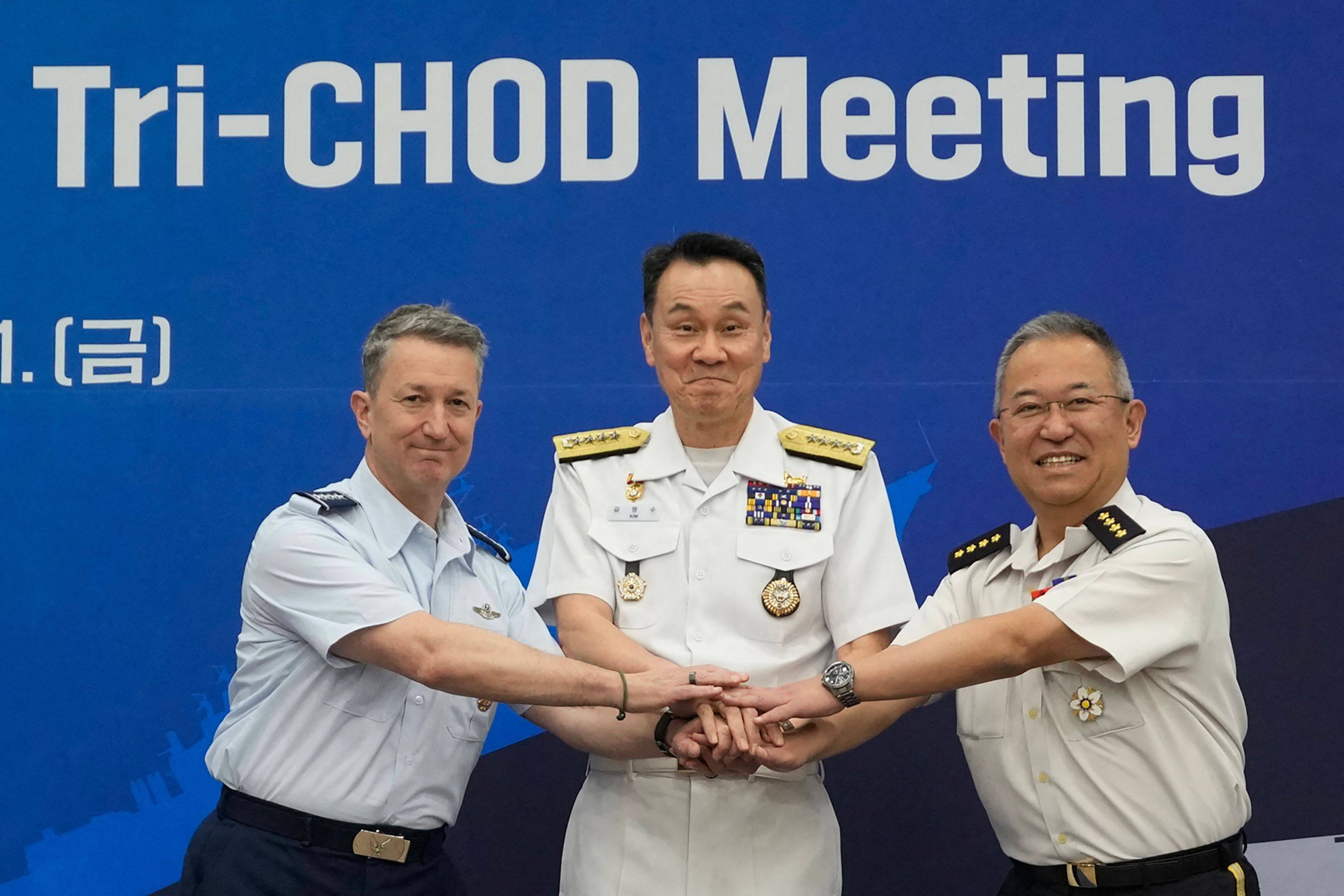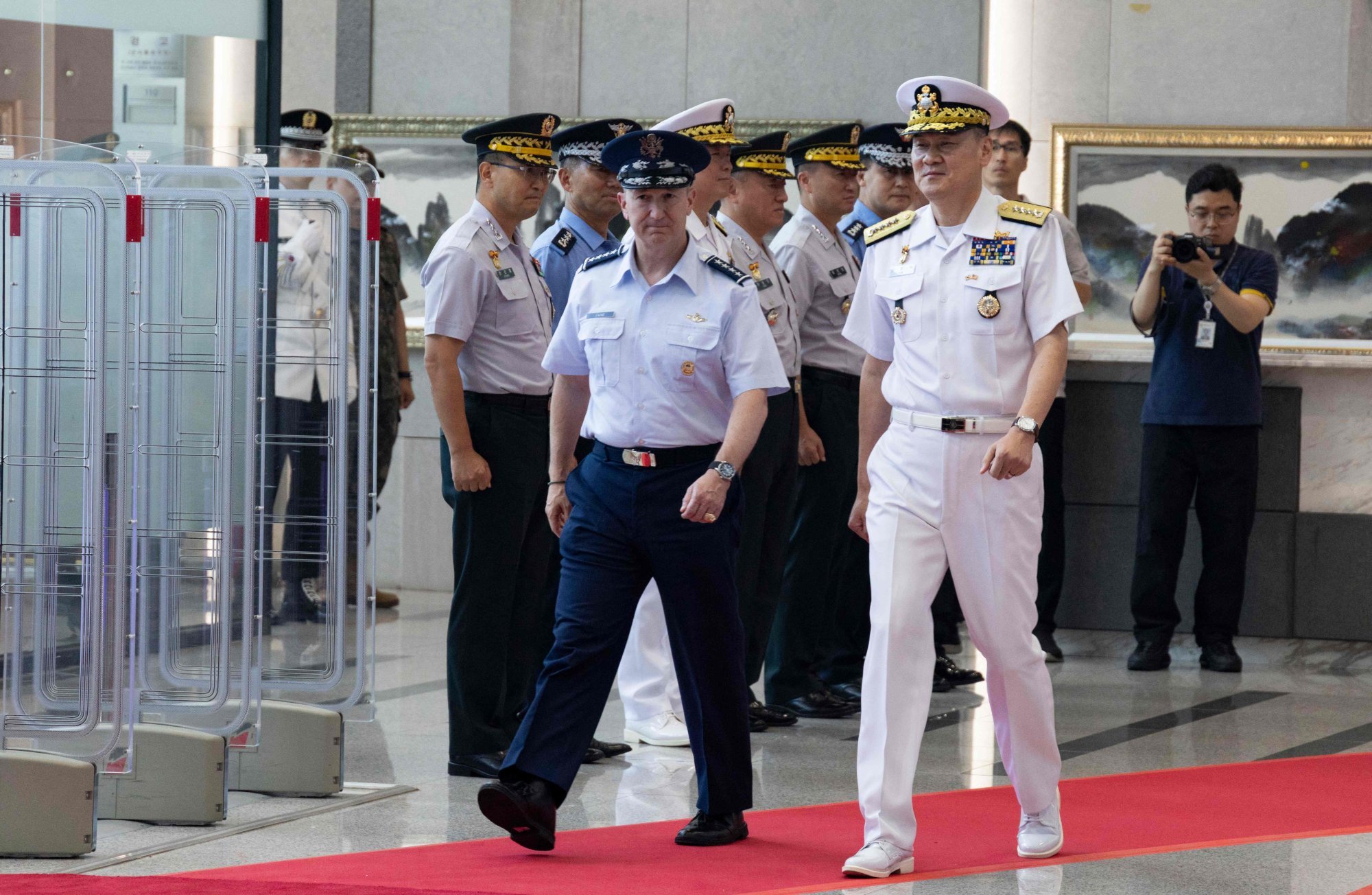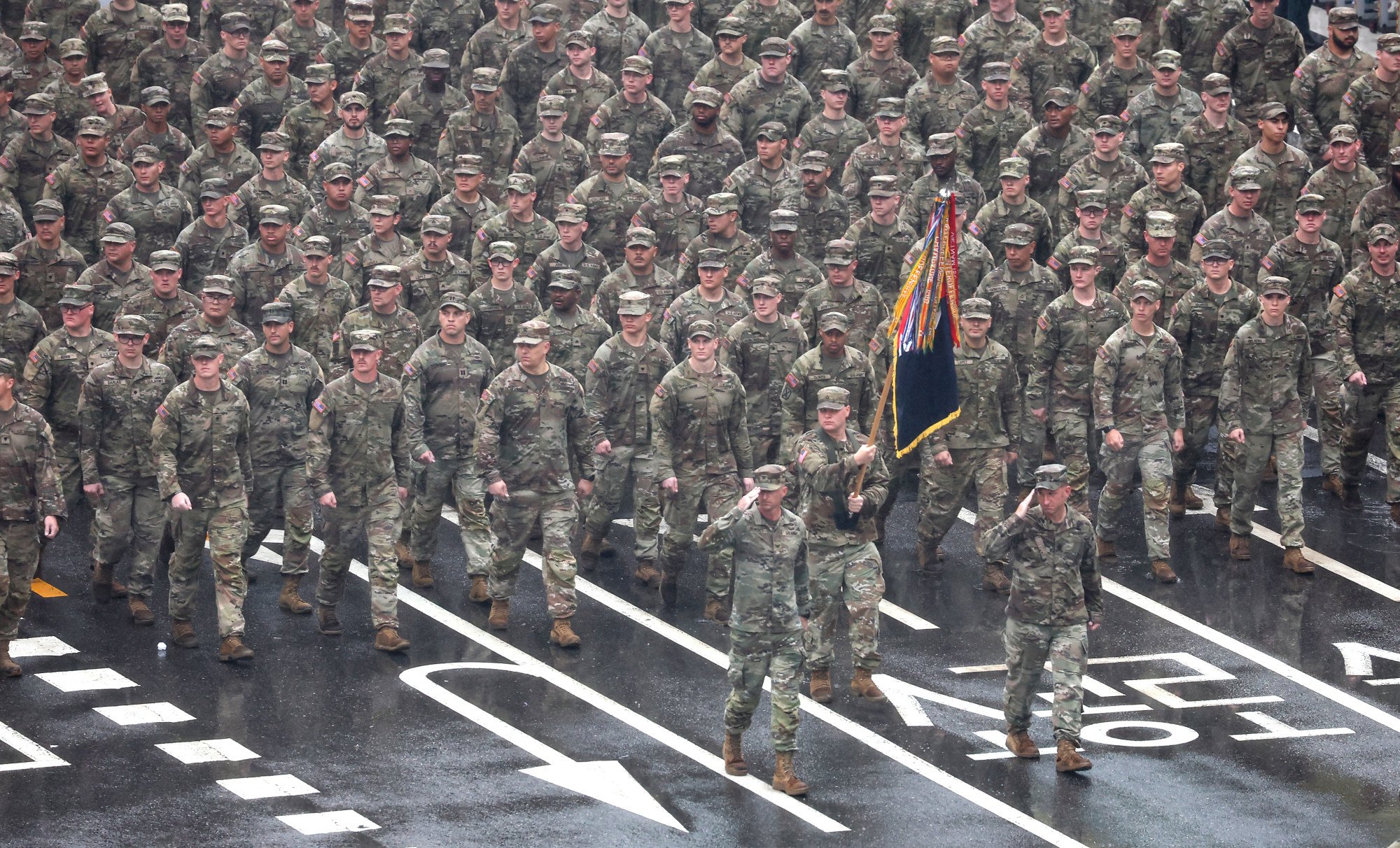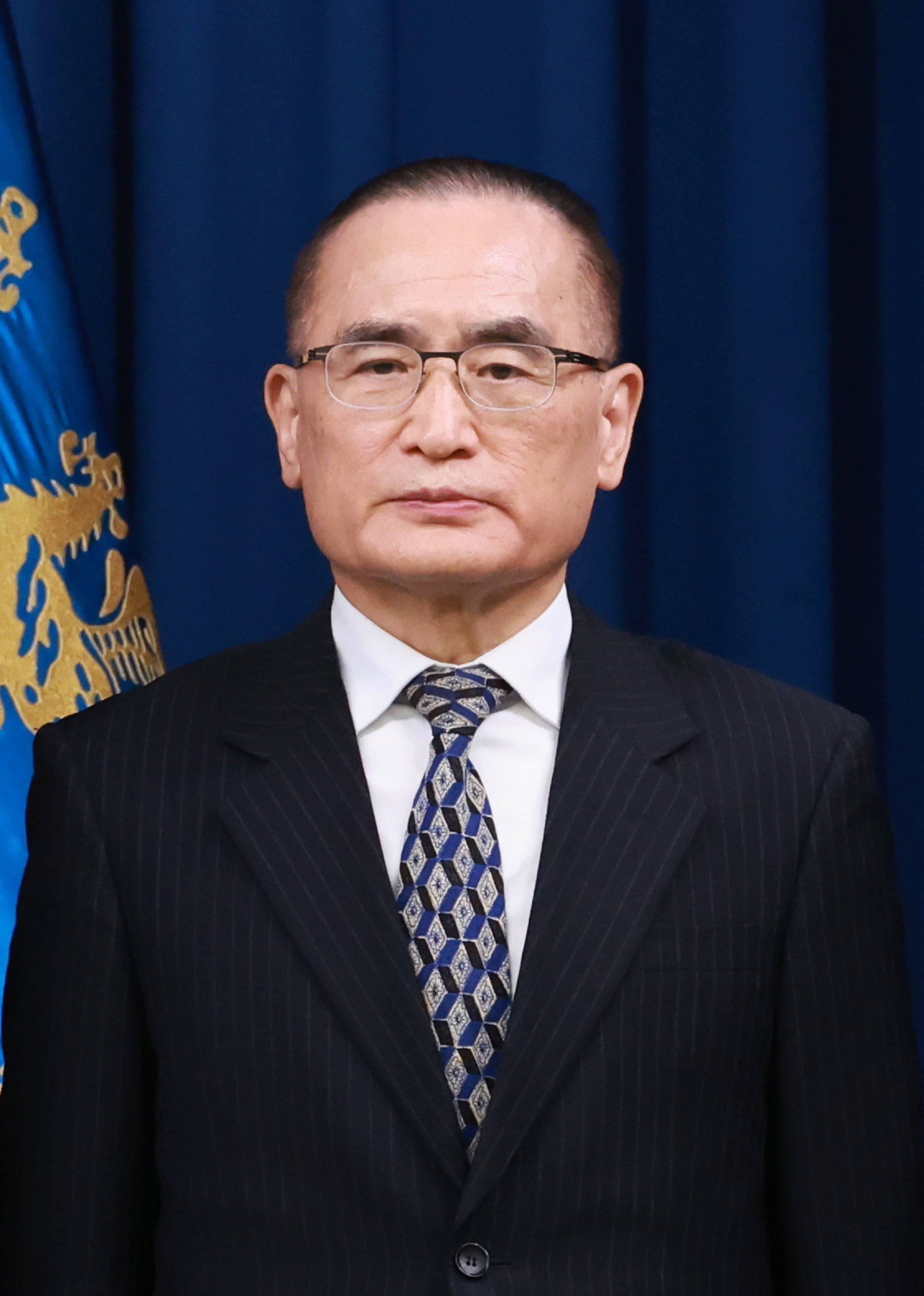US officer urges closer South Korea-Japan defence ties amid North threat
Visit by General Dan Caine, top US military officer, comes amid growing calls in Washington for South Korea to shoulder more defence costs

America’s highest-ranking military officer has called for closer trilateral defence ties with South Korea and Japan in response to what he described as an “unprecedented” military build-up by North Korea and China.
The remarks by General Dan Caine, chairman of the US Joint Chiefs of Staff, come amid growing pressure on Seoul to shoulder more of the cost of hosting 28,500 US troops and to support their expanded role beyond the Korean peninsula – a move that could test South Korea’s willingness to align more closely with US regional strategy.
“Our focus in the United States remains on re-establishing deterrence and doing so needs and requires the trilateral cooperation between our three countries,” Caine said at a meeting on Friday with his South Korean and Japanese counterparts, Admiral Kim Myung-soo and General Yoshihide Yoshida, in Seoul.
“The DPRK [North Korea] and China are undergoing an unprecedented military build-up with a clear and unambiguous intent to move forward with their own agendas,” he added.

Following the meeting, the three military leaders issued a joint statement condemning Pyongyang’s “unlawful” weapons development and reaffirming efforts to work towards the complete denuclearisation of North Korea.
They also addressed concerns over Pyongyang’s deepening military alliance with Moscow, including the reported deployment of the North’s troops to help Russia in its war on Ukraine, and Russia’s potential transfer of military technology to the North, according to the statement.
Caine’s visit comes amid growing calls in Washington for South Korea to shoulder a larger share of defence costs and align its military spending closer to Nato levels – up to 5 per cent of gross domestic product by 2035.
The issue of burden-sharing was reignited earlier this week by US President Donald Trump, who blasted South Korea’s defence contributions during a cabinet meeting, calling them insufficient.
“We rebuilt South Korea. We stayed there. It’s OK. We rebuilt it. And they pay us very little for the military,” Trump said. “They should be paying for their military,” he added, citing South Korea’s economic strength.
Recalling his past negotiations during his first term, Trump added, “I said for South Korea as an example, you know, we give you free military, essentially very little, and I think you should pay us US$10 billion a year.”
If pursued, Trump’s demand would represent nearly a ninefold increase over Seoul’s projected contribution for 2026.
Trump also reiterated that South Korea should bear the full cost of its military protection.
His comments came a day after he announced plans to impose a 25 per cent tariff on South Korean imports starting August 1 – a move that extends the original tariff deadline by three weeks.
Unhandled type: inline-plus-widget {“type”:”inline-plus-widget”}
Ahead of the US presidential election in November last year, the allies concluded a five-year deal under the 12th Special Measures Agreement (SMA) outlining cost-sharing for US troops stationed in South Korea. Under the SMA, Seoul agreed to increase its contribution by 8.3 per cent to US$1.47 billion in the first year.
South Korea’s foreign ministry reaffirmed on Wednesday that it would adhere to the terms of the agreement.
Jin Sung-joon, the top policymaker for the ruling Democratic Party of Korea, on Thursday denounced Trump’s remarks as “excessive and outrageous” and “disrespectful” to a key ally.
He also expressed concern over Trump’s distortion of facts – including the incorrect claim of 45,000 US troops stationed in South Korea, when the actual figure stands at about 28,500.
Jin further refuted Trump’s assertion that the US provided military support to South Korea free of charge, saying Seoul already contributed about US$1 billion annually, not including substantial indirect costs such as rent-free use of military bases and large-scale purchases of advanced US weaponry.
South Korea’s contribution had continued to grow in line with inflation and was not cut under the Biden administration, contrary to Trump’s claims, Jin added.
“The government must first correct the US’ distorted understanding of the facts,” Jin said, urging Seoul to work with Washington to “reverify the truth” about cost-sharing.

Meanwhile, Defence Priorities, a Washington-based think tank, released a report on Wednesday recommending a sharp reduction in US Forces Korea, from 28,500 troops to about 10,000.
Titled “Aligning Global Military Posture with US Interests”, the report warned that American troop levels in South Korea should be further reduced if Seoul restricted US operational flexibility in regional crises.
“The ground personnel left would be primarily for support, sustainment, logistics, and maintenance,” the report stated, “leaving the responsibility for combat operations in the event of any crisis on the peninsula to South Korean forces.”
The report was authored by Jennifer Kavanagh, a senior fellow and director of military analysis at the think tank, and Dan Caldwell, a former senior adviser to Defence Secretary Pete Hegseth.
Doo Jin-ho, a senior analyst at the Korea Research Institute for National Strategy, said South Korea should consider taking the lead in renegotiating the SMA and doubling its contribution.
“The increased costs could be spent in enhancing the visibility of the deployment of US strategic assets” on the Korean peninsula, Doo told This Week in Asia on Friday.

In a related development, National Security Adviser Wi Sung-lac said on Wednesday that Seoul had proposed a “package deal” in tariff negotiations with the US, combining economic and security issues.
“We raised a range of issues spanning trade, investment, procurement and security, and suggested moving forward with negotiations by taking this comprehensive package into account,” Wi said upon returning from Washington.
“I proposed holding a Korea-US summit at an early date to help facilitate mutually beneficial agreements on key pending issues, and [US Secretary of State Marco] Rubio expressed his support.”
Cha Doo-hyeogn, a senior researcher at the Asan Institute for Policy Studies, said the potential realignment of US forces in South Korea – designed to enhance their strategic flexibility for deployment beyond the peninsula – had been under consideration for two decades in response to growing threats from China.
“If South Korea wants to maintain the alliance with the US, it has no other choice but to accept the realignment,” he said, “and it should consider increasing its contribution to regional security.”